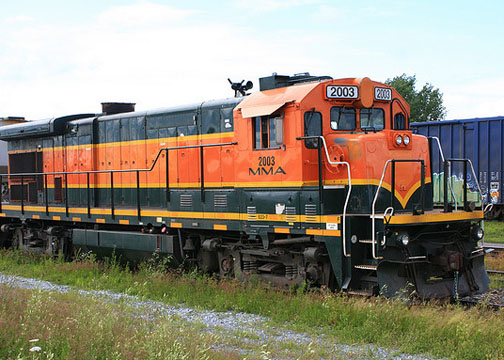While it’s impossible to know just how effective it will be, applying the Cross-border Insolvency Protocol to the bankruptcy proceedings of the Montreal Maine and Atlantic Railway Ltd. could result in faster, cheaper, and more equitable distribution to creditors and victims.

MMA is the company at the heart of the train disaster in Lac Mégantic, Que., that killed 47 people Aug. 7. It has sought to have judges on both sides of the border consider its case in a co-ordinated effort.
Within the Companies’ Creditors Arrangement Act in Canada and Chapter 11 in the U.S. there are provisions that allow for one jurisdiction to recognize the other.
Last week, a U.S. bankruptcy judge in Bangor, Maine, and a Superior Court judge in Sherbrooke, Que., adopted the cross-border protocols so they could hold joint hearings.
With MMA there is Montreal Main and Atlantic Railway Ltd. — the U.S. company that owns 100 per cent of Montreal Maine and Atlantic Canada Co. It
filed a CCAA with the Canadian entity and Chapter 11 with the U.S. entity.
The cross-border protocol is something courts are more comfortable dealing with these days says Hubert Sibre, a partner in the Montreal office of Davis LLP and a member of the firm’s bankruptcy, insolvency and regulatory group.
“It’s impossible to know how effective it will be but they are pressed by time,” he says. “The cash flow is worse than they expected and they need to find a solution pretty quickly.”
Sibre says filing a cross-border protocol allows for co-ordination and co-operation between the courts and the trustee.
“The experience from the past is when you do that it’s cheaper, it’s faster and probably more equitable,” says Sibre.”You have the monitor here who supervises the process and then a trustee who is an attorney in the U.S. who supervises everything.”
Documents indicate MMA has also initiated a sales process of its assets.
“You want a single sales process for the entire amount of the assets and the trustees have indicated they want a sales process that is integrated,” he says.
Then there is the claims process.
“You have people who can claim against one or the other entity. For example, those claiming wrongful death could claim against MMA (the Canadian entity) or against MMAR (the U.S. entity). You don’t want to double the claims so you want to tell the court: ‘This is going to be a huge mess if we don’t have an integrated process. I want to sell these assets as one group of assets and once there is the money make one list of creditors for both sides of the border’.”
While protection of the court has been extended to MMA until Oct. 9, in mid August, the Canadian Transportation Agency suspended the running of its trains because it didn’t have proper insurance policy. The railway went to court to borrow $50,000 against its assets to pay the insurance but the certificate is only valid until Oct. 1.
MMA must now find the right buyer.
“They probably know exactly who is interested,” says Sibre. “What I read between the lines is they need to find somebody else, either to operate the business until they can sell it, or buy the assets. It’s either one or the other.”
Even with cross-border protocols in place, sometimes there can be a fight between the U.S. and Canadian entities over how much money should go to whom.
“Sometimes it doesn’t solve itself very easily, but in the vast majority of cases allows for a better realization of the assets to the benefit of the creditors,” says Sibre. “This could be in court for years though.”

 MMA is the company at the heart of the train disaster in Lac Mégantic, Que., that killed 47 people Aug. 7. It has sought to have judges on both sides of the border consider its case in a co-ordinated effort.
MMA is the company at the heart of the train disaster in Lac Mégantic, Que., that killed 47 people Aug. 7. It has sought to have judges on both sides of the border consider its case in a co-ordinated effort.